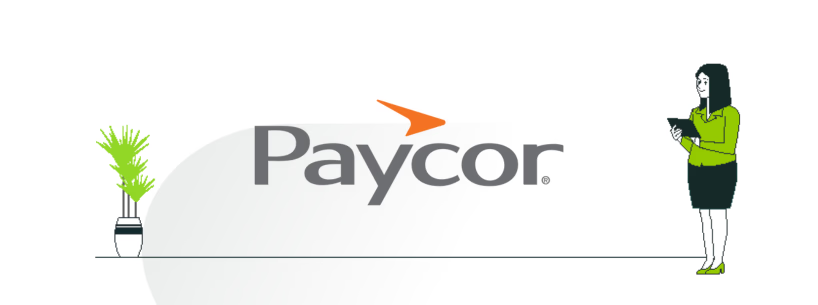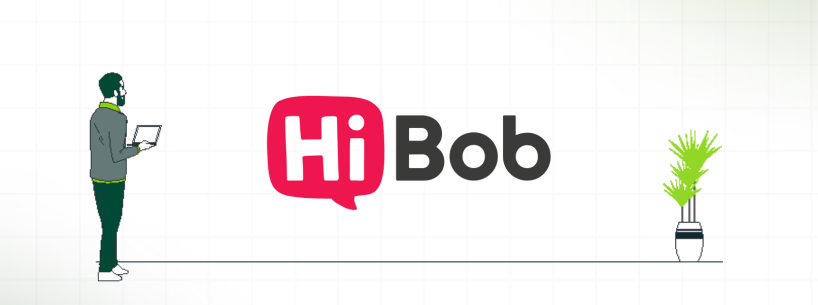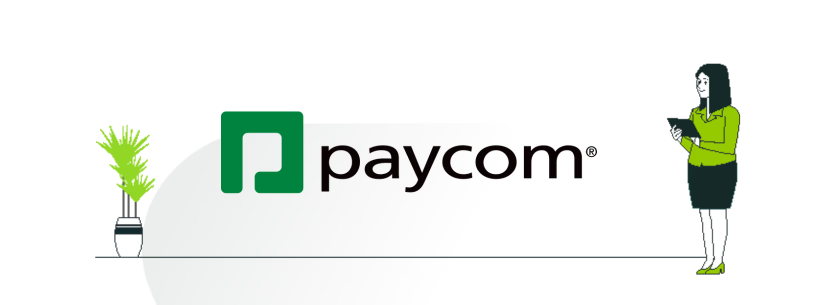
Your small company won’t stay small forever. As it grows, the processes you follow today may no longer be effective or sustainable in the long run. This is particularly true when it comes to streamlining Human Resources (HR) operations, attracting and retaining top talent, and ensuring compliance with regulations. In short, midsize companies often find themselves stretched thin.
This is where a Human Resources Information System (HRIS) comes in. These platforms help businesses maintain workplace policies, ensure compliance, manage employee records, and simplify day-to-day HR tasks.
However, not all HRIS platforms are the same. It’s important to pick the one that aligns with your company’s specific needs. That’s why we have compiled a list of the best HRIS systems for midsize companies, so HR teams and administrators don’t have to spend hours searching when they are already too strapped for time.
HRIS System | Rating | Key Features | Starting Price |
4.3 |
| $10/employee/month (custom plans available) | |
4.3 |
| $1.50/user/month (Essential HR) | |
4.4 |
| Custom pricing (tiers by company size) | |
5 |
| Custom pricing | |
4.5 |
| Custom pricing (Select, Plus, Premium) | |
4.9 |
| $8/user/month (modular pricing) | |
4.2 |
| Custom pricing (modular plans) | |
4.6 |
| Custom pricing | |
4 |
| Custom pricing (Core, Core PRO) |
1. BambooHR – Best For User-Friendly HR Management And Hiring

BambooHR is a comprehensive platform that supports employers and HR managers at every stage of the employee lifecycle, from hiring and onboarding to performance management and offboarding. By eliminating the need for spreadsheets and multiple tools, it helps businesses optimize HR operations and centralize workforce data. Its real value lies in its intuitive design and ability to reduce administrative overhead.
With features like e-signatures, performance tracking, and mobile accessibility, the software simplifies recruitment and onboarding processes and supports consistent record-keeping.
Key Features
Pros And Cons
Pros | Cons |
Easy time-off requests and visibility of team schedules Customizable interface with company branding Smooth applicant funneling and onboarding process | The candidate database cannot be exported BambooHR doesn’t offer automated recruiting reports |
Pricing
BambooHR plans start at $10/employee/month. However, they offer flexible plans at custom pricing based on company size and needs, with options for small teams and growing organizations. These plans are:
- Core
- Pro
- Elite
Disclaimer: The pricing is subject to change.
2. Zoho People – Best For Customizable HR Tools

Zoho People is a unified, cloud-based HR solution that helps organizations manage all aspects of their workforce. It supports HR teams with the full hiring cycle, from onboarding to exit, with efficiency and ease. Furthermore, its direct integration with Zoho Expense and Zoho Payroll eliminates manual data entry and simplifies payroll reconciliation by syncing employee information across modules.
The software is designed to adapt to various organizational structures. Teams can customize workflows, forms, and modules to match their existing HR processes. It also includes 360-degree feedback, continuous performance reviews, and goal tracking to help employees stay aligned and grow within the company.
Key Features:
Pros And Cons
Pros | Cons |
Smooth leave and attendance tracking Employee self-service options reduce dependency on HR Easy navigation, even for first-time users | Document template design is cumbersome, with limited preview options No option to create standard jobs |
Pricing
Zoho People offer multiple pricing tiers to suit different organizational needs. The plans are structured as follows:
- Essential HR: US$1.50/user/month
- Professional: US$2.50/user/month
- Premium: US$3.50/user/month
- Enterprise: US$5/user/month
- Zoho People Plus: Custom pricing
Disclaimer: The pricing is subject to change.
3. Paycor – Best For Analytics-Driven HR And Compliance Support

Paycor software is designed to address the complex HR needs of small to mid-sized businesses. It offers a unified platform that combines HR, payroll, analytics, and compliance management.
Payroll features include automated tax filing, real-time calculations, direct deposit, early access to earned wages, and support for multiple pay structures (hourly, salary, bonuses) across different states. On the HR side, it helps automate onboarding, document management, and employee self-service via its mobile app.
For compliance and decision-making, the platform delivers proactive alerts for tax compliance, payroll errors, and analytics dashboard that reveal trends in turnover, pay equity, and headcount. This helps mid-sized businesses reduce risk and gain insight from workforce data.
Key Features:
Pros And Cons
Pros | Cons |
Fairly easy to use for basic HCM tasks The recruiting module is strong and customizable Continuous feature updates aimed at improving user experience | Reporting tools have limitations and technical issues Delays in reinstating Admin access after investigations |
Pricing
The vendor offers multiple pricing modules based on the company's size and needs. All of the following plans come with custom pricing:
Below 50 Employees
- Basic
- Essential
- Core
- Complete
50 – 1,000+ Employees
- HCM Cor (1 Month Free)
Disclaimer: The pricing is subject to change.
4. HiBob – Best For Employee Engagement And Modern Onboarding

HiBob, also known as Bob, is a cloud-based HRIS that brings core HR tools into one modern, social-style platform. It covers onboarding, time-off management, performance tracking, compensation, and people analytics. In addition to standard HR tools, the platform includes culture-focused tools such as birthday reminders, shoutout feeds, and work updates to strengthen team engagement.
It also offers workflow automation and integrated e-signature tools that support HR teams, managers, and employees in collaborating and staying connected across the organization.
Key Features:
Pros And Cons
Pros | Cons |
Helps employees connect and bond through personal profile details Location-specific calendars and dashboards improve usability Club and ‘About’ sections help employees connect over shared interests | Leave submission syncing issues Limited language availability and offline functionality |
Pricing
HiBob offers customized pricing that is based on the organization’s size and needs.
5. ADP Workforce Now – Best For Payroll Flexibility And Outsourcing

ADP Workforce Now is an all-in-one cloud-based payroll and HR software. It centralizes employee data and streamlines various administrative processes. It automates HR processes, and helps reduce the complexity of managing payroll, benefits, and compliance from separate systems. With role-based dashboards for administrators, managers, and employees, self-service tools such as digital pay statements, benefits enrollment, and time tracking are accessible through both web and mobile apps.
The mobile solution also supports viewing current and previous pay statements and tax forms. This way, employees can clock in or out, record hours worked, and review schedules through the same interface.
Key Features:
Pros And Cons
Pros | Cons |
Scales well for companies of various sizes Professional and reliable time management features Connection files allow some data to transfer immediately | Problem resolution is inconsistent Password resets and timesheet navigation can be unreliable |
Pricing
ADP Workforce Now offers custom pricing for the following tiered plans:
- Select
- Plus
- Premium
Disclaimer: The pricing is subject to change.
6. Rippling – Best For Fast Growing Companies With Remote Teams

Rippling HR combines HR, IT, payroll, and finance into a single unified platform. This centralization reduces the need for multiple disconnected systems and allows businesses to manage employee data, applications, and devices from a single source of truth.
The platform automates various processes such as onboarding, role changes, device provisioning, and compliance alerts. This way, data changes in one area propagate across the system automatically.
Rippling also supports global workforces, offering built-in compliance capabilities across all 50 US states and more than 180 countries. With nearly 600 third-party integrations, it connects HR data with popular tools like Slack, Google Workspace, and Salesforce.
Key Features:
Pros And Cons
Pros | Cons |
Quick implementation with flexibility for different business needs Saves time for teams across multiple offices and remote positions by securely centralizing logins Handles account provisioning and laptop configuration without relying on IT teams or engineers | Exports as a long list of events instead of a toggleable shared calendar Mobile app lacks full functionality and multi-language support |
Pricing
Rippling offers modular pricing, starting at $8/user/month. The plans are divided into the following categories:
- Rippling Platform
- Rippling HCM
- Rippling IT
- Rippling Spend
Disclaimer: The pricing is subject to change.
7. Paylocity – Best For Payroll Automation And Workforce Communication

Paylocity HR & Payroll helps companies centralize HR, payroll, finance and IT capabilities in a single system. The data can be accessed through its desktop and mobile applications, so it's easier to collaborate with team members anytime and anywhere. Their solutions are scalable for everything from onboarding and benefits administration to talent acquisition and tax compliance.
Although payroll management is the prime capability of Paylocity, its functionalities go beyond that. The AI integration into the software makes so many complex tasks easy. For instance, expense reporting can be fully automated, and errors can be minimized to a great extent.
Among its many features, communication stands out in that it makes it easier for employees and management to send notes and recognition to and from each other.
Key Features:
Pros And Cons
Pro | Cons |
Users can view paychecks and deductions clearly Self-service for time off requests and payroll info Handles multi-entity payroll with imports and time/labor tracking | PTO doesn’t always sync between systems Login/account lockouts cause tax season issues |
Pricing
Paylocity customizes its pricing based on each organization's specific needs. It offers modular pricing that includes:
- Payroll
- Human resources
- Workforce Management
- Talent Management
- Benefits Management
- Employee Experience Platform
- Marketplace Integrations
- Beyond Traditional HRIS
Disclaimer: The pricing is subject to change.
8. Paycom – Best For All-In-One HR Automation

Paycom is an ideal solution for companies looking for an all-in-one HR solution. This cloud-based software is designed to centralize all the customer data and automate the entire employee lifecycle (from hire to retire). This single database architecture houses all the HR tools in one software, so nothing really feels scattered across multiple places.
Talking about its standout feature, IWant, Paycom’s command-driven AI engine, enables users to access employee data instantly without navigating through the software. This significantly reduces reliance on HR staff and increases overall efficiency.
Key Features:
Pros And Cons
Pros | Cons |
The reporting feature supports multiple formats, giving users flexibility in how they pull insights Employees can update and access their HR information anytime Simplifies enrollment, payroll, and documents in one place | Frequent problems with daily timecards Regular password changes and multi-level questions are frustrating |
Pricing
Paycom offers custom pricing. Businesses can get a tailor-made quote based on the organization's size and specific modules needed.
9. Personio – Best For Global Hiring And Workforce Planning

Personio is a comprehensive, cloud-based HRIS system, specifically designed to simplify HR operations for small and mid-sized businesses. It serves various industries, including manufacturing, professional services, retail, and more. The platform covers a broad suite of HR tools, including document storage, compliance tracking, absence management, and time tracking.
The real value of Personio lies in its automation and centralization features. It provides HR managers and employees with a single source of truth, helping companies make faster decisions, backed by factual data.
Its user-friendly interface and rapid implementation (typically 4-5 weeks) enable HR teams to adapt quickly and fully leverage the platform's capabilities.
Key Features:
Pros And Cons
Pros | Cons |
Simplified navigation enhances administrative efficiency Continuous product updates and improvements that simplify HR work Automation features help streamline various processes | Some system functions are not intuitive and require extra manual steps Limited email and communication tools |
Pricing
Personio offers the following scalable plans with custom pricing:
- Core
- Core PRO
Disclaimer: The pricing is subject to change.
As a company scales, its HR challenges also increase. That’s when investing in an HRIS system becomes essential. A good HRIS can improve payroll accuracy, HR operations, compliance management, and other administrative tasks. However, businesses should look for a solution that balances budget, features, user experience, and scalability, so the software stays by the company’s side and supports their needs as they expand, no matter the situation.
